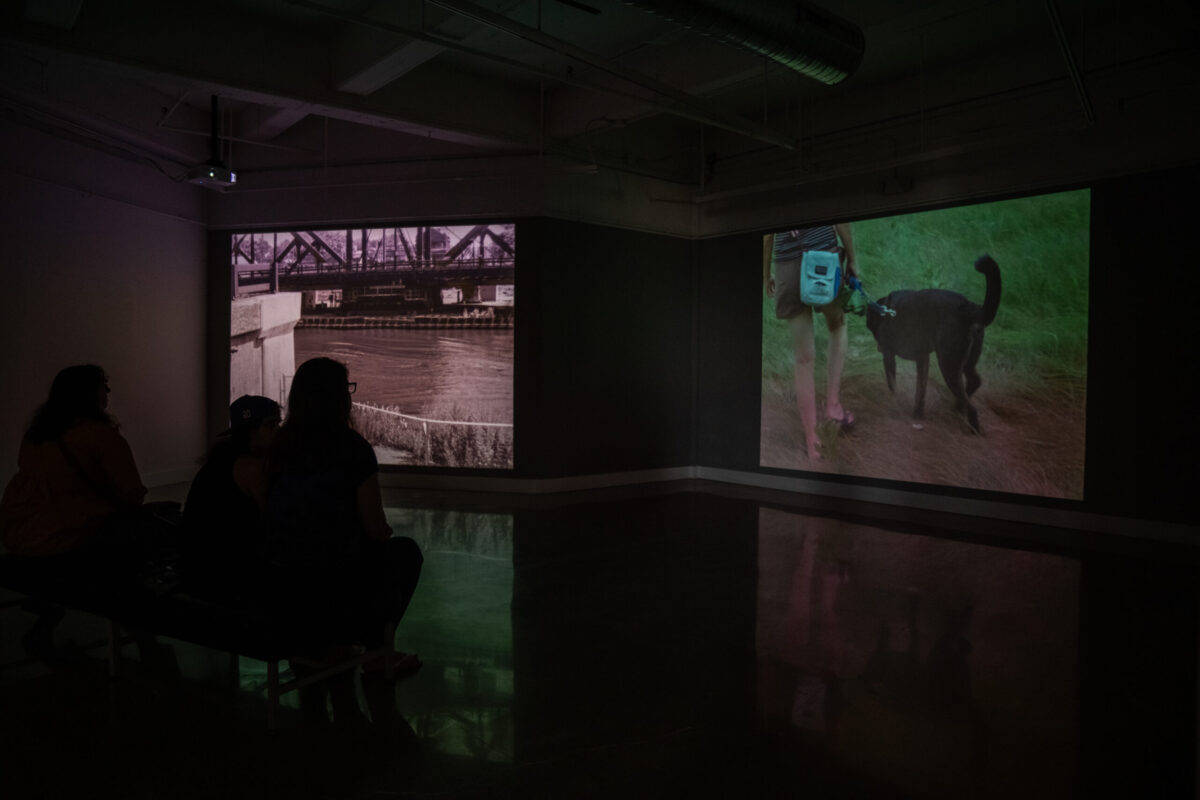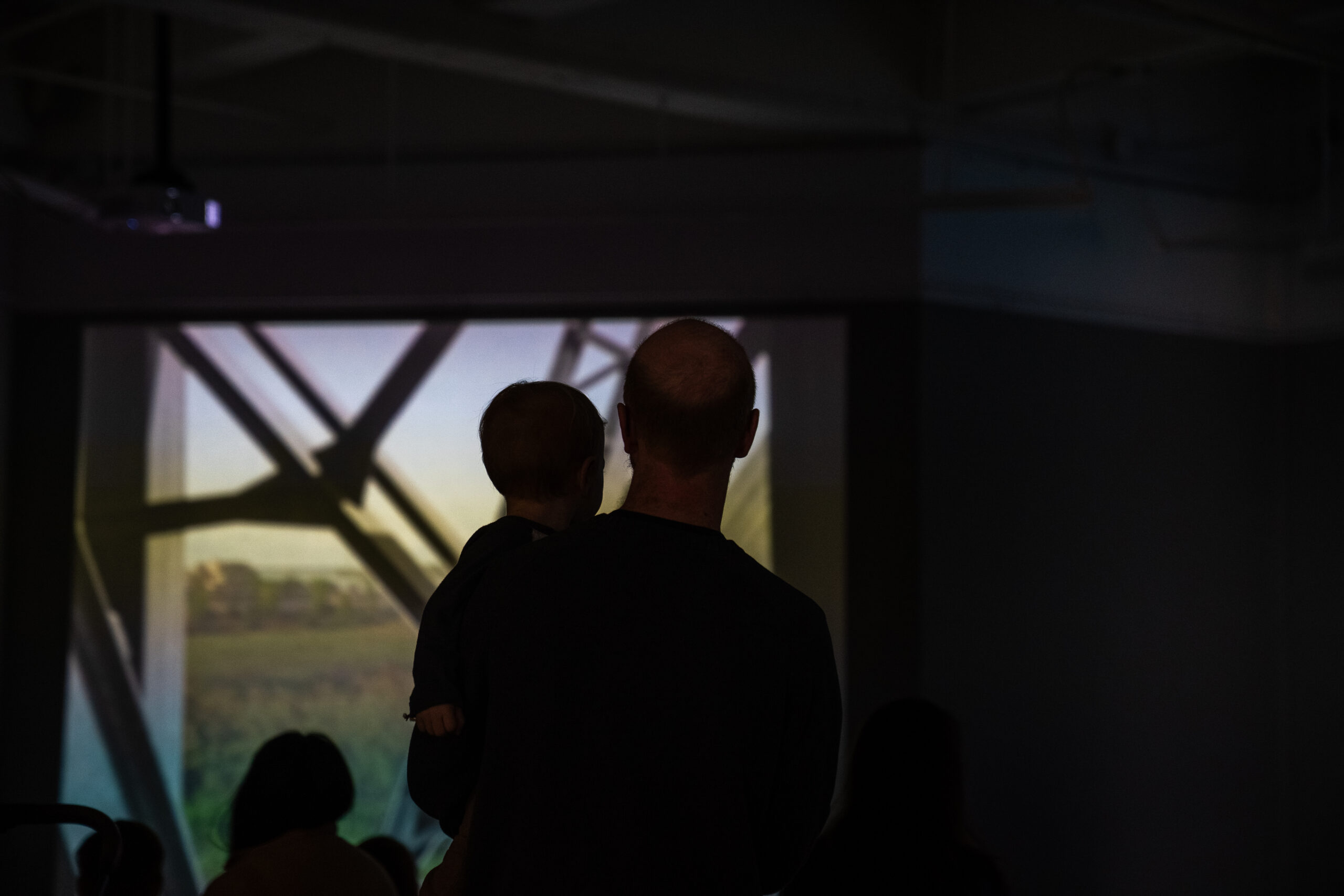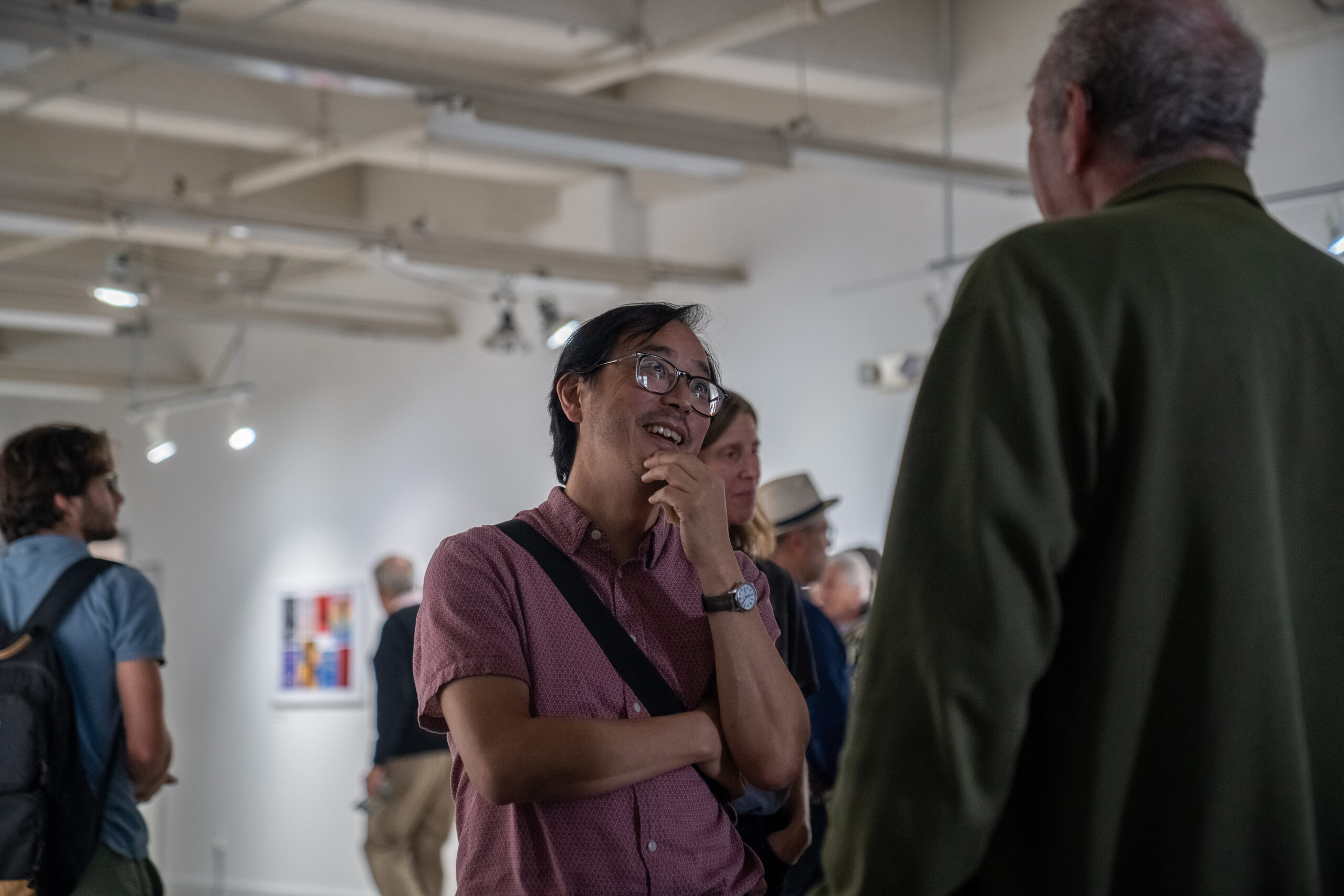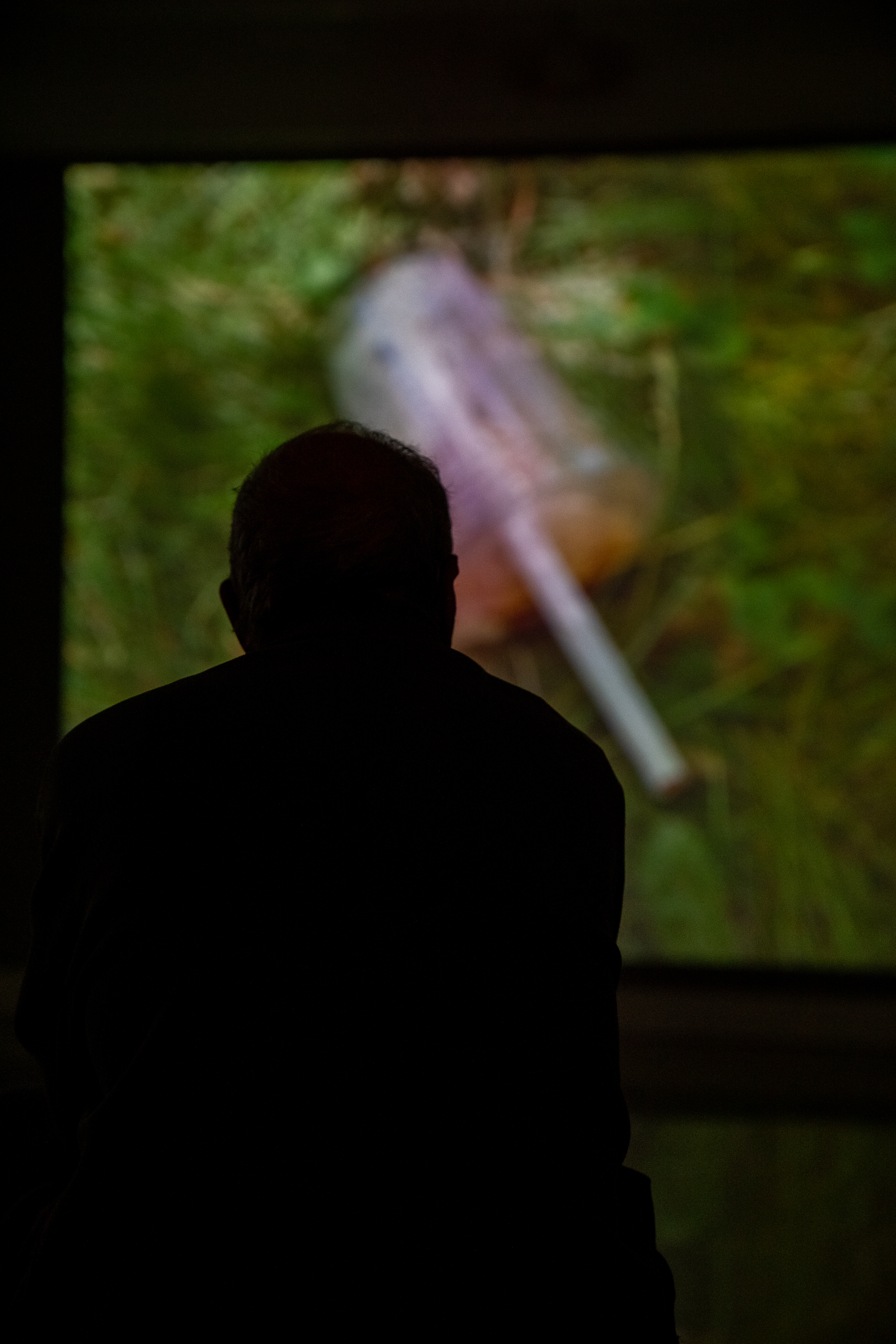Date/Time
Date(s) - 09/22/2023 - 11/03/2023
12:00 am
Location
Buffalo Arts Studio
Categories
Opening Reception, Friday, September 22, 2023, 5:00—8:00 pm
Part of M&T Bank 4th Friday @ Tri-Main Center
At the Speed of Life
Curatorial essay by Shirley Verrico
Buffalo Arts Studio presents Carl Lee’s Unity Island, a three-channel film installation about a ¼ square mile piece of land in Buffalo, NY. Unity Island Park is a sliver of land that sits between the Niagara River and Black Rock Canal, with Buffalo, NY on one side and Fort Erie, Canada on the other. Visitors can reach the island by crossing a railroad swing bridge that periodically rotates to allow boats to pass through. It is a green space with a pond and fishermen, where immigrant communities come every weekend to picnic and play kick voleyball, and where Lee and his wife have been taking their dog Augie on walks for the last eight years.
“I love traveling. It allows you to see and experience many different perspectives. However, staying in one place – revisiting the same spot over many years – also gives you a unique perspective. It affords a vantage point in time. You can see what changes over the course of a year, or a decade. It’s time travel at the speed of one’s life. What I’m hoping to reveal with this project is that kind of a view: a visual study of a unique place over time, the people that visit it, the flora and fauna, the history, and my personal connection to it.”
Lee’s experience of the island park is specific and personal: a “natural” setting where he and his wife walk their dog Augie. It feels like a timeless place where the well-trodden path to the pond has always existed. He views his intimate, long-running relationship to the island almost as an extension of personal space. Using 16 mm film and an analog camera, Lee has recorded some of the changes that have occurred over time; the rise and fall of pond water levels, the growing colony of beavers, and the aging of his beloved Augie. These interactions also reveal the site to be a locus of so many other narratives and histories—economic, environmental, and social—that indicate the countless perspectives one space holds. The layers of sound and moving images disorient the visitor and amplify the fragmented nature of all of these experiences.
The installation includes three unique projections with the full cycle taking just over 12 minutes to complete. The films begin in black and white, bearing the marks of Lee’s hand processing, including scratches and watermarks. The audio is a gentle ebb and flow of ambient sounds including passing trains, buzzing insects, and rustling trees. Although we hear Lee, we only see his wife, Dorothea, and their dog Augie, with the camera often following them across the landscape. As if to make clear this is truly an old-school motion picture, Lee shows us Dorothea marking a slate to indicate a clear synchronization point and announcing the date, her arms full of sound recording equipment.
Lee’s camera meanders across the island, showing us the dramatically shifting geometry of the bridge as it gracefully swings open to allow a boat to sail by. Lee’s camera also lingers on the rippling surface of the lake, drawing us into the abstract beauty of the water. In the center projection, Lee’s camera follows Augie and Dorothea as they move across the island, eventually reaching the top of the hill at its center. The projection to the left pans the full 360 degree view of the island as seen from the hill, however, Lee obscures our view with the superimposed structure of the swing bridge.
In the final few minutes, the projections take on a new, frenetic energy. The projection to the right picks up speed and flashes abstract images Lee created as rayograms, the cameraless technique whereby objects are placed directly on the surface of 16mm film stock, exposed to light, and processed to negative. Lee used plants and detritus from the island for his rayograms, working in two-foot sections for this labor intensive process. The projections seem anything but organic, resembling vibrating Franz Kline paintings rather than idyllic landscapes. The projection to the left amplifies the energy, projecting a second set of bouncing rayograms. The center projection also shifts as the tranquil images of wildflowers are broken by scenes of brightly colored trash agitated with a frame by frame process.
These moments of the installation seem to capture Lee’s own ambivalence about this place and even, perhaps, about this moment in time. Although Unity Island is a quiet bit of green space in the City of Buffalo, it was built on a landfill and houses a wastewater treatment plant. This toxic history is actively erased with the rebranding of the space as not merely an island, but as a park. The rebranding of Unity Island goes beyond the surface. In 2015, artist and filmmaker Jodi Lynn Maracle, a Mohawk resident of Buffalo who is also a member of the Seneca Nation of New York, petitioned Buffalo leadership to change the island’s name as it was racist and derogatory toward Native American women. The members of the Buffalo Common Council voted unanimously to change the island’s name to Unity Island (Ga’nigö:i:yoh) in 2015. Neither rebranding nor renaming changed the complicated history of the island.
Lee does not leave the viewer in discomfort for long. Instead, the installation returns to Augie looking at us lovingly, constantly over time. This final minute includes separate scenes with Augie; sometimes with youthful energy and sometimes with a graying muzzle, but always beckoning us to come and play. Lee obliges. The film ends with a view of a large stick flying into the pond and Augie swimming joyfully out to fetch his prize. Lee gives the viewer this moment of connection, as though we threw the stick, and it is deeply satisfying.
Artist Bio
Carl Lee is a media artist based in Buffalo, NY, and has been making films, videos, and installation work that explore personal spaces and the built environment since the 90s. Lee received a BA from Harvard University in Visual and Environmental Studies in 1992 and an MFA in Film and Media Arts from Temple University in Philadelphia in 2000. He teaches film and video production and works as the technical director in the Department of Media Study at the University at Buffalo. Lee has exhibited at Micromania Festival, NY, Studio Waveland, MS, Hallwalls Contemporary Art Center, NY, Undercurrent Gallery, NY, Burchfield Penney Art Center, NY, Locust Street Art, NY, Just Buffalo Literary Center, NY, Urban Renewal Traveling Film Festival, Squeaky Wheel, NY, PDX Film Festival, OR, as well as in Paris, France and Weimar, Germany. Lee was the recipient of the 2023 NYSCA Support for Artists grant.




